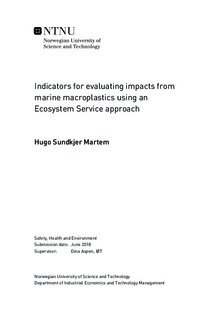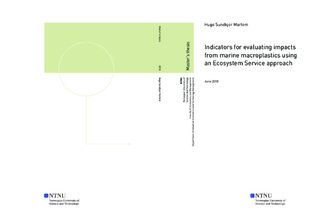| dc.description.abstract | The purpose of this thesis was to evaluate how indicators that describes the impacts of marine macroplastic may be related to marine ecosystem services. Part of the task objective was developing a set of indicators that related to both subjects. To answer the assignment, the following research questions were chosen:
1. Which pressure, state and impact indicators have been developed in relation to marine macroplastic?
2. How can ecosystem services be used to structure impact assessment from marine macroplastic?
3. Which indicators may be used to measure impacts on marine ecosystem services from marine macroplastic?
Systems Engineering, which looks to ensure the realisation of successful systems, was the overarching methodology of the thesis. This approach applies life cycle models to ensure verification and validation of the different stages in the life cycle of systems. This thesis has applied a vee-model for the development of an indicator set. An environmental indicator framework, called the DPSIR-framework, was used to categorise the indicators and describe pressure (input), state (amount) and impact (social, economic and ecological) due to macroplastic, and to give the thesis a more systematic structure.
A literature review for active macroplastic indicators revealed that these were few in number. Only one indicator related to impact and state was identified and a couple of pressure indicators related to lost or abandoned fishing gear. Several proposed future indicators were also identified and reviewed for selection for the indicator set.
Ecosystem services may be used to structure the impacts of marine macroplastic. This can be done by individually classifying both subjects and connecting the impacts of macroplastic to the different services. The connection may highlight the relation between impacts of macroplastic and marine ecosystem services, and can assist in the selection and development of related indicators.
The targeted indicators in this thesis can provide information on how the the social, economic and ecological impacts of marine macroplastic affect marine ecosystem services. Potentially, they can also be used to value the services, enhancing their influence on policy. These types of indicators are ideally suited for direct services, which have direct benefits and a strong link to human well-being (e.g. fish). Future research should focus on challenges with determining the direct services of impacted species and measuring complex services. 10 indicators were identified for the indicator set, while two were developed. | |

